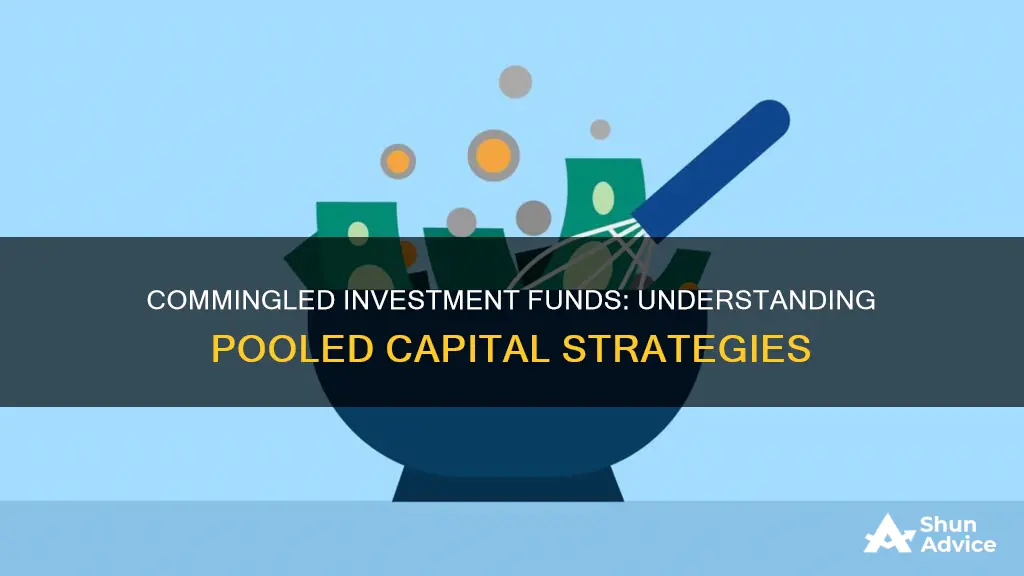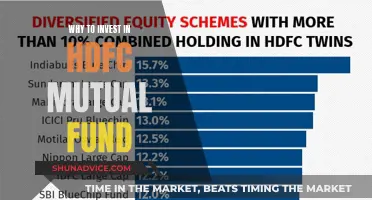
A commingled investment fund is a pooled investment vehicle where assets from multiple accounts are combined into a single portfolio, managed collectively. Commingled funds are often referred to as institutional funds and are not publicly listed or available to individual retail investors. Instead, they are used by closed retirement plans, pension funds, insurance policies, and other institutional accounts.
Commingled funds are similar to mutual funds in that they both pool funds, lowering the investment management costs. However, commingled funds are less transparent and less liquid than mutual funds. They are also not regulated by the SEC, which means they are not required to submit lengthy disclosures.
Commingled funds offer investors the advantages of scale, allowing access to investments that may require a larger buy-in. They also benefit from lower fees as the work is largely the same for the investment manager, but the investors benefit from economies of scale.
| Characteristics | Values |
|---|---|
| Type of fund | Pooled investment vehicle |
| Management | Managed by a professional fund manager |
| Investors | Multiple investors |
| Investor type | Institutional investors or high-net-worth individuals |
| Investment type | Diversified portfolio of securities |
| Purpose | Pursue a common investment strategy |
| Benefits | Lower costs, greater access, Diversification |
| Regulation | Not regulated by the SEC; reviewed by the US Office of the Comptroller of the Currency and state regulators |
| Transparency | Less transparent than mutual funds |
| Liquidity | Less liquid than mutual funds |
What You'll Learn

Pooled funds
One of the main benefits of pooled funds is the ability to reduce costs for investors. By combining assets from multiple investors, the fund can benefit from economies of scale, lowering trading costs per dollar invested. Additionally, the larger pool of money provides access to investments that may have high buy-in requirements. Pooled funds also offer diversification benefits, as the fund can invest in a wider range of securities, lowering portfolio risk.
It is important to note that pooled funds are not regulated by the Securities and Exchange Commission (SEC) in the United States, which means they have less stringent regulatory requirements compared to other types of investment funds. This can impact the level of transparency and reporting provided to investors.
Overall, pooled funds offer benefits such as cost reduction and increased investment opportunities, but it is important for investors to carefully consider the risks and limitations associated with this type of investment vehicle.
Index Funds: Long-Term Investment Strategies Explored
You may want to see also

Not publicly traded
A commingled fund is a fund that consists of a portfolio of assets from various accounts that are blended together. They are also referred to as institutional funds and are a type of pooled fund that is not publicly listed or available to individual retail investors. Instead, they are used by closed retirement plans, pension funds, insurance policies, and other institutional accounts.
Commingled funds are not publicly traded and are not available for individual purchase. They are only available to investors in specific employer-sponsored retirement plans. They are not regulated by the Securities and Exchange Commission (SEC) and are subject to review by the United States Office of the Comptroller of the Currency, as well as individual state regulators.
Commingled funds offer several advantages, including lower fees and access to investments with large buy-ins. They are professionally managed and provide investors with a diversified portfolio. The larger pool of money can provide access to investments that may require a larger buy-in. The individual investors can benefit from lower fees as the work is largely the same for the investment manager.
However, there are also disadvantages to commingled funds. They lack transparency and are less liquid than publicly traded funds. They may also have restrictions on withdrawing money, which can affect liquidity. Commingled funds may not be suitable for meeting short-term financial goals.
Social Investment Funds: Powering Change Through Capital
You may want to see also

Managed by professionals
A commingled fund is a pooled investment vehicle where assets from multiple accounts are combined into a single portfolio, managed collectively by a professional fund manager. This arrangement allows individuals to participate in a broader range of investments with a diversified portfolio, which might be difficult to achieve individually due to higher costs or access limitations.
Commingled funds are managed by professional fund managers who allocate the pooled resources across a variety of securities, aiming to achieve economies of scale and reduce individual investment costs. Investors benefit from diversified portfolios that might otherwise be inaccessible due to high entry costs, with their returns and risks shared proportionally among all participants.
The professional fund manager is responsible for managing the pooled investments. They decide which securities to buy for the portfolio and develop strategies for growth. The fund manager's investment decisions are based on the collective goals and risk tolerance of all investors in the fund.
Commingled funds are typically used by institutional investors, such as closed retirement plans, pension funds, insurance policies, and other institutional accounts. They are not publicly listed or available to individual retail investors. Instead, they are only available to investors in specific employer-sponsored retirement plans.
Commingled funds are similar to mutual funds in that they both pool funds, lowering the investment management costs. However, commingled funds are less transparent and less liquid than mutual funds. They are also not regulated by the SEC, which means they have fewer regulatory requirements to comply with.
Crowdfunding: Invest Your Money Wisely to Make a Profit
You may want to see also

Reduced costs
Commingled funds reduce costs for investors in several ways. Firstly, they benefit from economies of scale, which allow for lower trading costs per dollar of investment. The larger pool of money means that fund managers can execute trades in larger blocks, reducing the overall trading costs for investors.
Secondly, commingled funds are not publicly marketed, which means there is no 12(b)-1 marketing fee, and they have lower administration fees. They are also not regulated by the SEC, which means they have fewer reporting requirements and lower compliance costs.
Thirdly, the central asset design of commingled funds is simpler and less costly to manage than multiple funds. The fund is overseen by a single manager or management team, who use their best ideas for one account, rather than for dozens or hundreds of individual accounts. This means that investors share the costs of managing and investing, which saves money.
Finally, commingled funds allow investors, especially those with smaller amounts of capital, to participate in diversified portfolios that are professionally managed. This collective buying power gives them access to a wider range of investments with large buy-ins, which may otherwise be inaccessible due to high entry costs.
Mutual Funds: Worth the Investment?
You may want to see also

Diversified portfolios
A commingled fund is a type of pooled investment vehicle that allows multiple investors to combine their assets into a single fund. These funds are managed by professional investment managers or asset management companies.
Commingled funds are an excellent way to achieve a diversified portfolio. By pooling assets from multiple investors, these funds can provide greater diversification across different asset classes and securities than individual investors could achieve on their own.
Access to Different Asset Classes
Commingled funds provide investors with exposure to a wide range of asset classes, such as stocks, bonds, real estate, or alternative investments. This diversification across asset classes helps to spread risk and reduce the impact of poor-performing investments.
Professional Management
Experienced investment professionals manage commingled funds, making strategic decisions on asset allocation, investment selection, and risk management. This professional management ensures that the fund is well-diversified and aligned with the investment objectives of its participants.
Cost Efficiency
Due to economies of scale, commingled funds can offer lower management fees and trading costs compared to individual investors managing their own portfolios. This cost efficiency allows investors to access a diversified portfolio of assets at a lower price point.
Accessibility
Commingled funds are accessible to a wide range of investors, including institutions, retirement plans, and high-net-worth individuals. They often have lower minimum investment requirements, making it easier for investors to access a diversified portfolio without needing a large amount of capital.
Types of Commingled Funds
Commingled funds come in various forms, each catering to specific investment objectives and strategies:
- Equity Funds: These funds primarily invest in stocks and aim for capital appreciation.
- Fixed-Income Funds: These funds invest in bonds and debt securities, offering potential income and lower risk compared to equity funds.
- Real Estate Funds: These funds invest in commercial properties, providing exposure to the real estate market without direct property ownership.
- Alternative Investment Funds: These funds may include hedge funds, private equity, or other alternative investments, offering diversification beyond traditional asset classes.
By investing in commingled funds, individuals can access diversified portfolios that are professionally managed and cost-efficient, reducing their overall investment risk.
Smartly Investing 100K in Mutual Funds at 35
You may want to see also
Frequently asked questions
A commingled fund is a pooled investment vehicle where assets from multiple accounts are combined into a single portfolio, managed collectively.
Commingled funds offer investors the advantages of scale. A larger pool of money can provide access to investments that may require a larger buy-in. Commingled funds are also more efficient and have lower costs than other funds.
Commingled funds are less transparent and less liquid than other funds, such as mutual funds. They are also not available to the general public.
Commingled funds are usually only available to institutional investors or investors in specific employer-sponsored retirement plans.
Commingled funds are not as easy to trade in or out of as mutual funds. You usually must have a connection to the party that controls the funds, such as working for an employer that offers a retirement plan of commingled funds.







